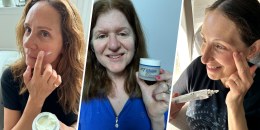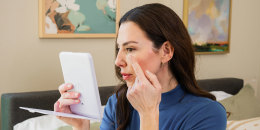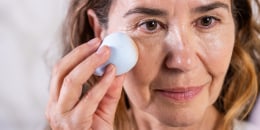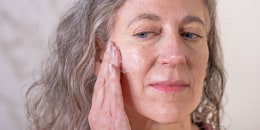Ah, summer. Lots of us look forward to spending time outdoors when the weather is nice and the sunlight stretches well into the evening. But all that time outdoors can put you at risk for a bevy of skin-related issues, from insect bites to heat rash.
Some of them, like mosquito bites, are annoying but temporary, and not likely to lead to long-term complications. But other skin conditions can be more serious, and some, like melanoma, can even be life-threatening. That's why it's important to take steps to keep your skin safe by using sunscreen, restricting your time in the sun and wearing sun protective clothing.
Of course, plenty of skin conditions aren’t related to the weather or sun exposure. When you notice something that’s not quite right on your skin, you might wonder whether it’s acne, a rash — or maybe something more serious.
Here are 19 common (and a few less common) skin conditions — with photos that will help you identify them.
Acne | Actinic keratosis | Basal cell carcinoma | Blisters | Carbuncle | Cellulitis | Chicken pox | Cold sores | Contact dermatitis | Eczema | Hives | Latex allergy | Lupus | Measles | Melanoma | Psoriasis | Rosacea | Squamous cell carcinoma
Acne
If you’re suffering from acne, you’re not facing it alone. Acne is the most common condition dermatologists treat — up to 50 million people in the U.S. are struggling with acne at any given time, and about 85% of people ages 12 to 24 have had acne at least once in their lives.
"People think of acne as a teenage problem, but I see it primarily in adult women,” said Dr. Amy McMichael, board-certified dermatologist at Atrium Health Wake Forest Baptist.
Photos of acne

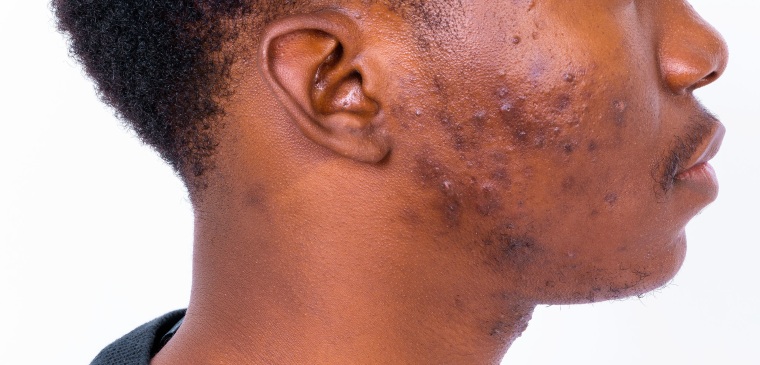
Acne symptoms and signs
Acne blemishes are most common on the face, chest, back, shoulders and neck, but they can appear almost anywhere. With acne, you might have pimples, blackheads, papules, pustules, cysts or nodules.
Causes of acne
With acne, your skin doesn’t get rid of dead cells properly. These cells build up and clog your pores.
Acne treatments
You can try over-the-counter products to treat acne. If they don’t work for you, you may need professional help, such as prescription treatments or medication.
Read more about acne and how to treat it.
Actinic keratosis
Actinic keratosis is a common condition where your skin develops lesions that look and feel like rough spots. It’s important to treat it because without treatment, over time, it can develop into squamous cell carcinoma (see below).
“We see (actinic keratoses) more frequently on chronically sun-exposed areas, like the face, forearms and the backs of the hands,” said Dr. Laura Ferris, professor in the department of dermatology at University of Pittsburgh.
Photos of actinic keratosis
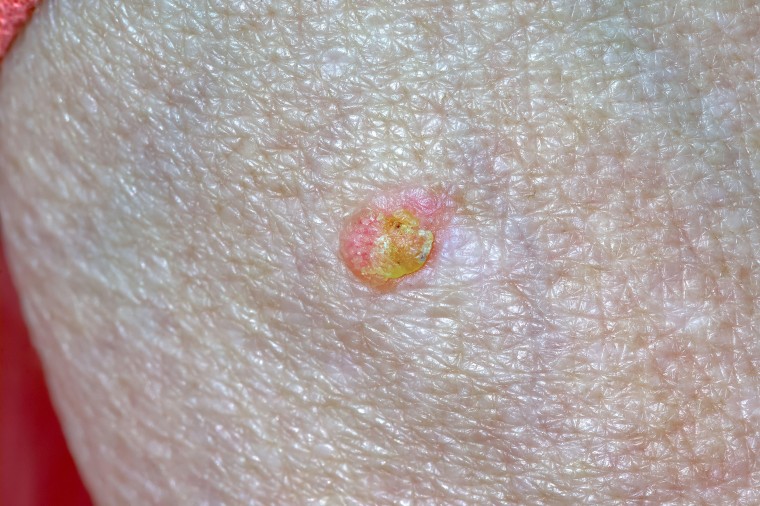
Actinic keratosis symptoms and signs
With actinic keratosis, you may have bumps that look and feel like acne or pimples; or gray, pink or red lesions that are rough.
Causes of actinic keratosis
Actinic keratosis is caused when cells in the skin called keratinocytes become damaged by ultraviolet rays.
Actinic keratosis treatments
Treatment may include liquid nitrogen, scraping, chemical peels or other therapies to remove the actinic keratosis.
Read more about actinic keratosis and how to treat it.
Basal cell carcinoma
About 3.6 million cases of basal cell carcinoma are diagnosed each year in the U.S. It’s the most common type of skin cancer. Ultraviolet rays from the sun or indoor tanning are the top cause of basal cell carcinoma.
Photos of basal cell carcinoma
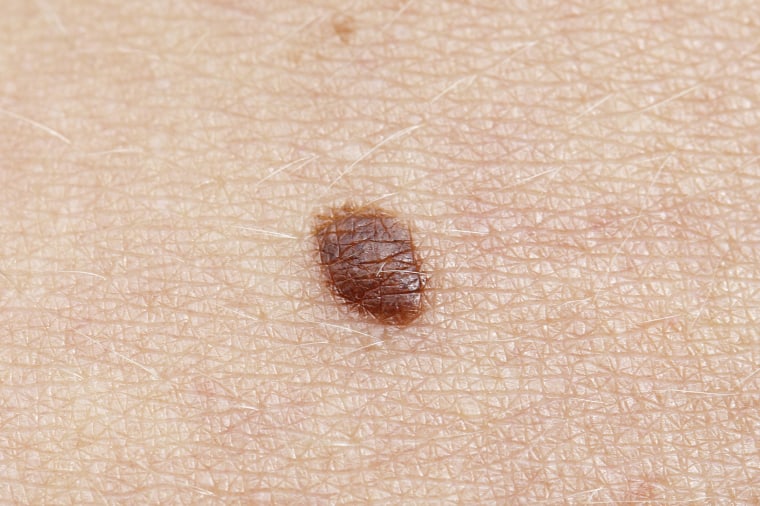
Basal cell carcinoma symptoms and signs
If you have light skin, you’re much more likely to get basal cell carcinoma than someone with dark skin. Look for any changes in your skin, even changes that are pink or the same color as your skin and changes that don’t appear in moles.
Causes of basal cell carcinoma
The main cause of basal cell carcinoma is exposure to ultraviolet rays from the sun or indoor tanning.
Basal cell carcinoma treatments
Your dermatologist may be able to remove a basal cell carcinoma tumor when doing a biopsy. Sometimes a Mohs surgery is recommended.
Read more about basal cell carcinoma and how to spot it.
Blisters
It’s common for most people to develop blisters once in a while.
Photos of blisters
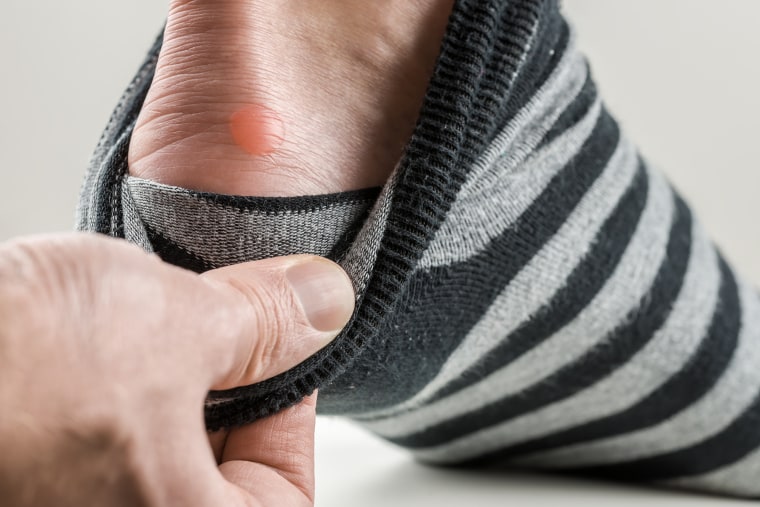
Blisters symptoms and signs
Blisters are small sacs of fluid that build up under the skin. They are usually painful.
Causes of blisters
You can get blisters from friction, like when a shoe rubs against your skin, or from skin diseases, heat or sunburns.
Blisters treatments
Blisters tend to heal on their own, but a blister can be drained if it’s too painful. “The best Band-Aid for the skin is the skin,” said Dr. Jenny Murase. “We usually do not recommend removing the skin of the blister.”
Read more about blisters and how to treat them.
Carbuncle
Sometimes confused with a spider bite, a carbuncle is a group of boils that stem from an infection of the skin and are connected to each other.
Photos of carbuncles
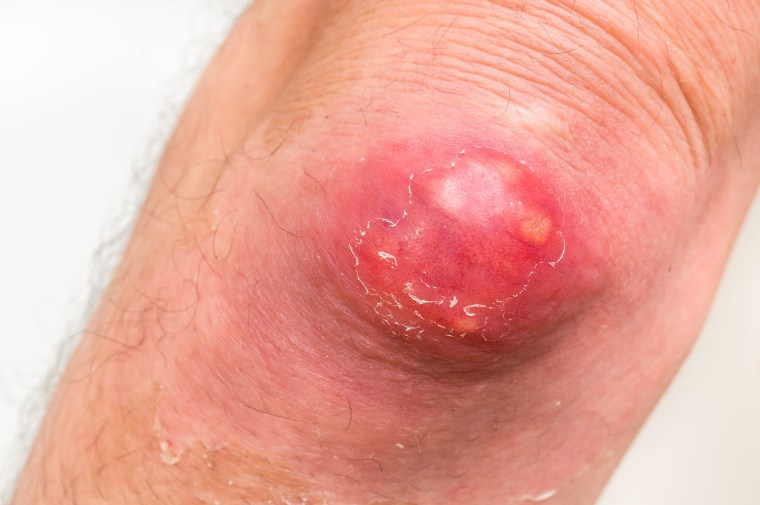
Carbuncle symptoms and signs
Red, tender bumps, or boils, that contain pus are signs of a carbuncle. Carbuncles can eventually rupture, and pus will leak out of them.
Causes of carbuncles
A bacterial infection, such as Staphylococcus aureus, is often the cause of a carbuncle.
Carbuncle treatments
If a carbuncle is small, you may be able to treat it at home with warm compresses and bandages. Otherwise, your dermatologist can make an incision to drain the pus.
Read more about carbuncles and how to treat them.
Cellulitis
Cellulitis is an infection of the skin in which the skin becomes red and swollen. It typically occurs after you get a cut or wound.
Photos of cellulitis
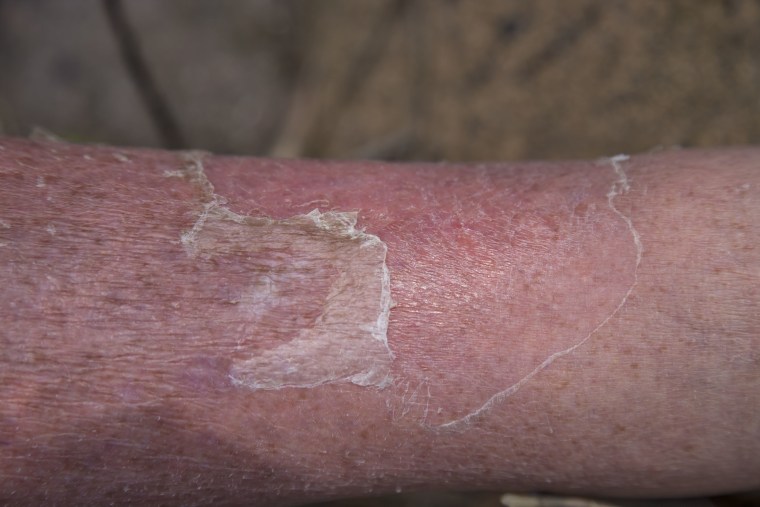

Cellulitis symptoms and signs
When you have cellulitis, an area of your skin — often on one of your legs — becomes red, swollen, warm and possibly painful.
Causes of cellulitis
Cellulitis can be caused by two different types of bacteria: streptococcus (aka strep) or staphylococcus (aka staph).
Cellulitis treatments
Antibiotics like penicillin, cephalosporin or erythromycin are normally used to treat cellulitis.
Read more about cellulitis and how to treat it.
Chicken pox
Also called varicella, this highly contagious disease mostly strikes children.
Photos of chicken pox
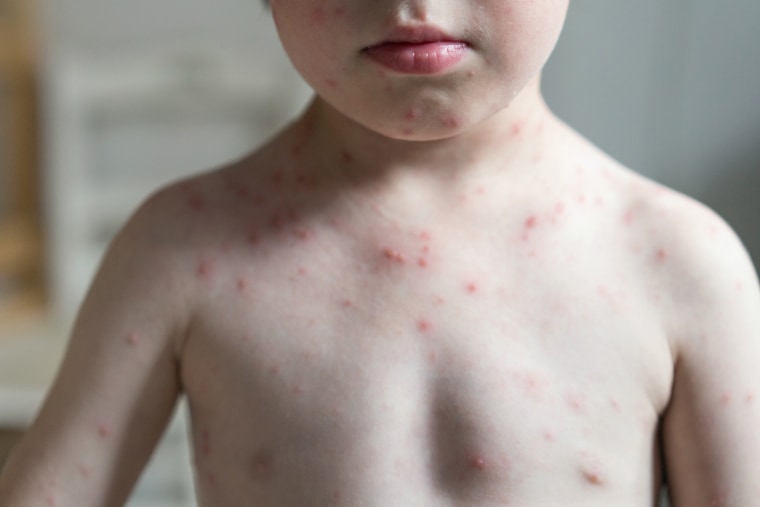
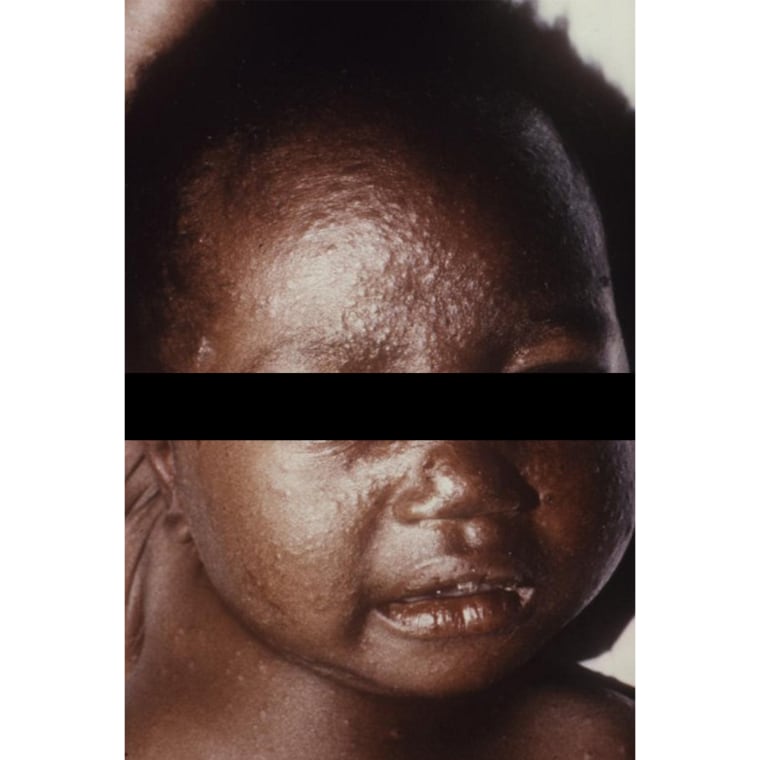
Chicken pox symptoms and signs
A fever may precede it, but the unique chicken pox rash appears on the skin with itchy blisters that look like lots of little dew drops.
Causes of chicken pox
The varicella-zoster virus (VZV) causes chicken pox — as well as shingles. It’s unlikely to get chicken pox if you’ve had the chicken pox vaccine.
Chicken pox treatments
The best treatment for chicken pox is prevention through vaccination. An early case of chicken pox may be treated with antiviral drugs. Other remedies can be used to ease symptoms.
Read more about chicken pox and how to treat it.
Cold sores
Also known as fever blisters, cold sores are blisters, or clusters of blisters, that appear on your lips or near your mouth.
Photos of cold sores
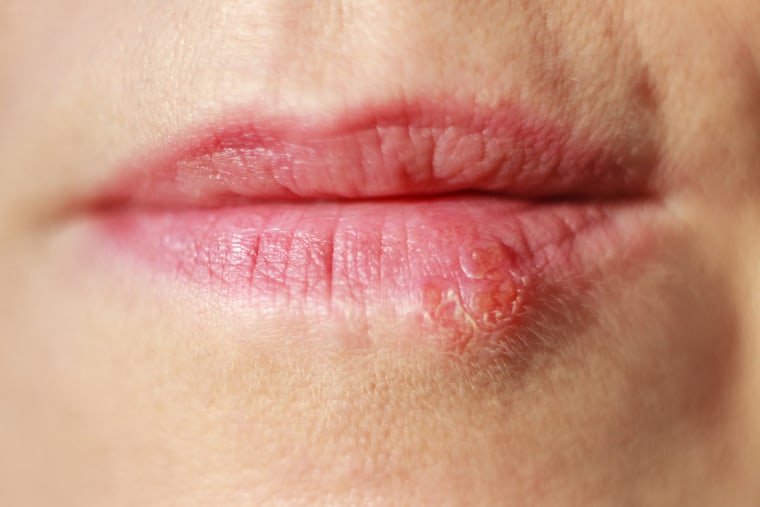
Cold sores symptoms and signs
Symptoms of cold sores can vary. The sores may start with a tingling, burning or other sensation, then break open and scab over.
Causes of cold sores
Cold sores are caused by the herpes simplex virus. Outbreaks are triggered by stress, fatigue, illness and other factors.
Cold sores treatments
Read more about cold sores and how to treat them.
Contact dermatitis
Almost everyone gets contact dermatitis at some point. There are two main types of contact dermatitis — allergic and irritant. Both trigger a rash.
Photos of contact dermatitis
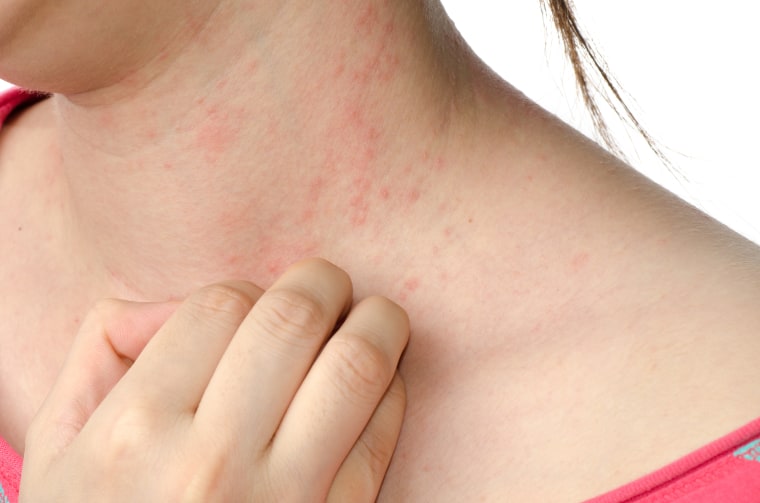
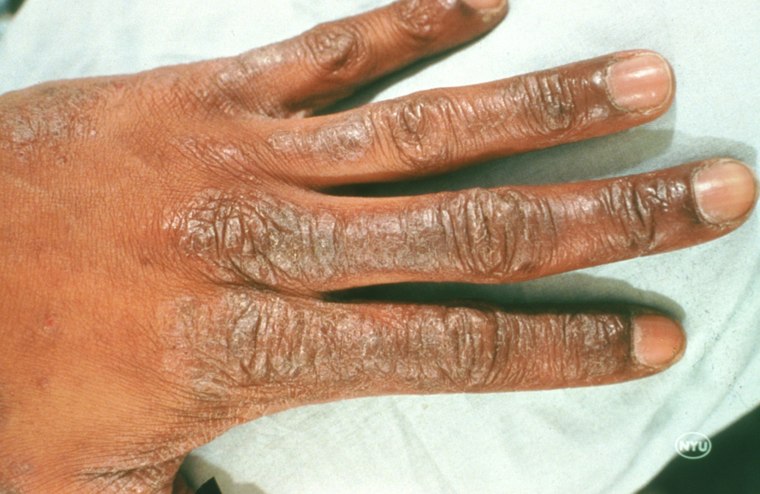
Contact dermatitis symptoms and signs
Symptoms of allergic contact dermatitis may include itching, rash, dryness and other symptoms. Cracked, itchy, chapped skin with sores may be signs of irritant contact dermatitis.
Causes of contact dermatitis
Contact dermatitis is caused by something that touches your skin — like poison ivy, nickel, fragrances, latex or other irritants — and triggers a rash.
Contact dermatitis treatments
The best treatment for contact dermatitis is to avoid whatever it is that triggers your rash. Beyond that, your dermatologist may also recommend antihistamine pills, moisturizers or topical steroids.
Read more about contact dermatitis and how to treat it.
Eczema
Eczema is a condition that causes red, itchy patches on the skin. It often starts at a young age — often people with eczema get it when they're babies.
Photos of eczema
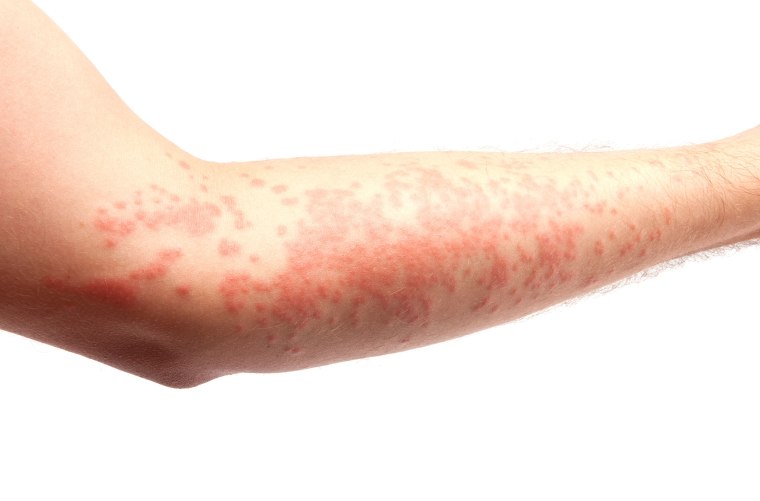
Eczema symptoms and signs
Eczema is almost always itchy, but otherwise symptoms can vary from person to person. Skin infected with eczema can be dry, dark, scaly, swollen or oozing.
Causes of eczema
Eczema may be caused by an overactive immune system, but it’s not entirely clear what causes the condition.
Eczema treatments
There is no cure for eczema, but symptoms can be managed with medications and other therapies.
Read more about eczema and how to treat it
Hives
The onset of hives can be mysterious, and though hives usually go away in less than 24 hours, new ones can repeatedly appear.
Photos of hives

Hives symptoms and signs
Hives appear on the skin as slightly swollen, raised pink or red patches. You may have one hive, a group of hives that may be separate or connected together.
Causes of hives
It’s difficult to pinpoint the cause of hives, but there are many triggers that can cause hives, from insect bites and allergic reactions to medication, stress and heat.
Hives treatments
The go-to treatment for hives is usually antihistamines.
Read more about hives and how to treat them.
Latex allergy
People with an allergy to latex are allergic to a protein found in the sap of the Brazilian rubber tree.
Photos of latex allergy
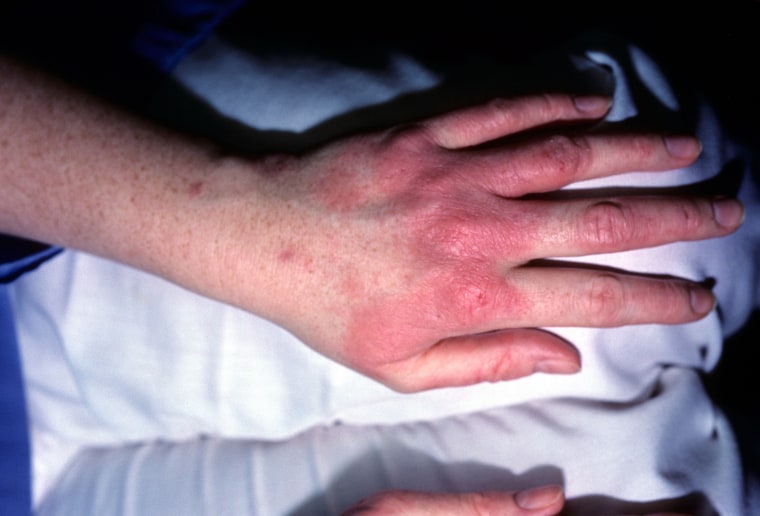
Latex allergy symptoms and signs
Different symptoms appear with different types of latex allergies. One type causes a rash on the skin; another can cause anaphylaxis, which can result in a swelling of the airways and difficulty breathing.
Causes of latex allergy
When your immune system reacts as though latex is a harmful substance, it causes an allergic reaction to latex.
Latex allergy treatments
Since there’s no cure for latex allergies, your best bet is to avoid coming into contact with latex.
Read more about latex allergy and how to treat it.
Lupus
An autoimmune disease that causes pain and inflammation, lupus can affect your skin, as well as your kidneys, heart, joints and lungs.
Photos of lupus

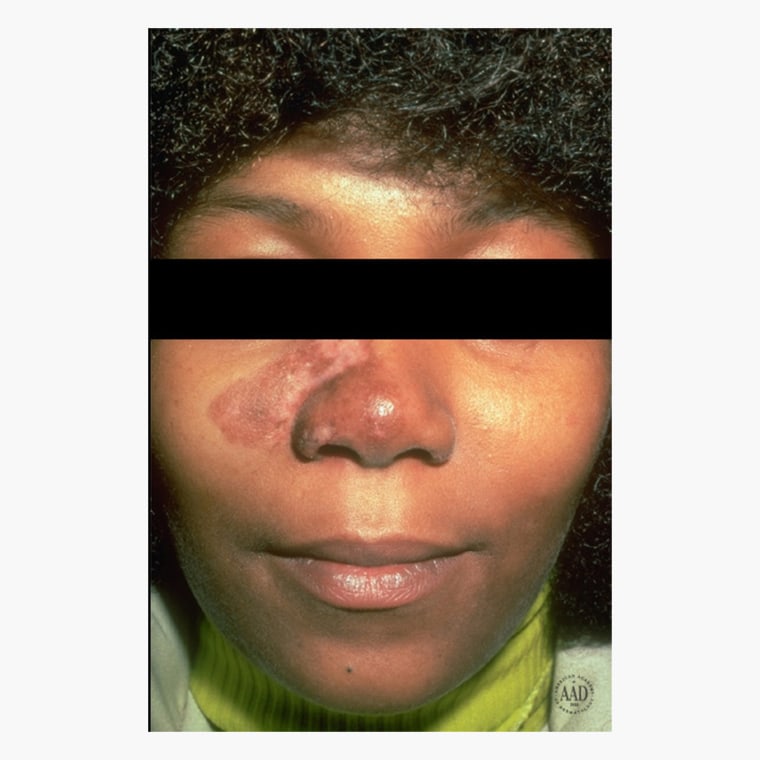
Lupus symptoms and signs
A red butterfly-shaped rash that appears on the nose and cheeks is one common sign of lupus, but symptoms of lupus will vary, depending on the type of lupus you have.
Causes of lupus
There are a number of factors that may play a role in whether you develop rosacea, but experts don’t know for certain what causes the skin condition.
Lupus treatments
There is no cure for rosacea, but the condition can be managed to help keep symptoms from worsening.
Read more about lupus and how to treat it.
Measles
Also known as rubeola, measles is a contagious — and potentially deadly — disease that usually strikes children.
Photos of measles

Measles symptoms and signs
Beyond the signifying red, spotted rash, measles may also be accompanied by a fever, cough, runny nose and other symptoms.
Causes of measles
A virus that infects the respiratory tract and spreads throughout the body causes measles. It’s one of the most contagious diseases.
Measles treatments
The best treatment is prevention through a vaccine. Otherwise, high doses of vitamin A, bed rest and medications to reduce pain and fever may help.
Read more about measles and how to treat it.
Melanoma
It’s one of the less common skin cancers, but melanoma is the most dangerous because it can easily spread to other parts of your body.
Photos of melanoma
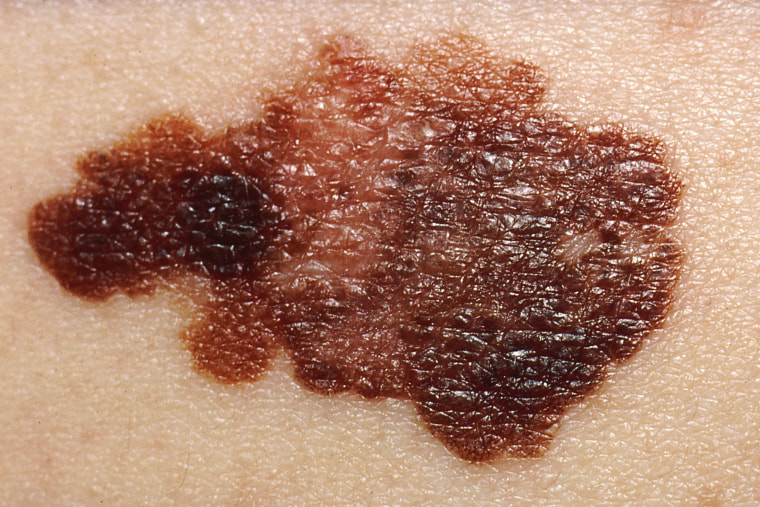
Melanoma symptoms and signs
Melanoma tumors tend to be black or brown, but can sometimes be pink, tan or white. Anyone can get melanoma, but people with light skin are at greater risk.
Causes of melanoma
UV light exposure from ultraviolet rays from the sun or indoor tanning causes most melanomas.
Melanoma treatments
Treatments depend on how advanced the melanoma is and where the tumor is located. It may include surgery, radiation, chemotherapy or other therapies.
Read more about melanoma and how to treat it.
Psoriasis
Psoriasis affects more than 8 million people in the U.S. It typically starts in the teen years or early 20s, though it can occur at any age.
Photos of psoriasis
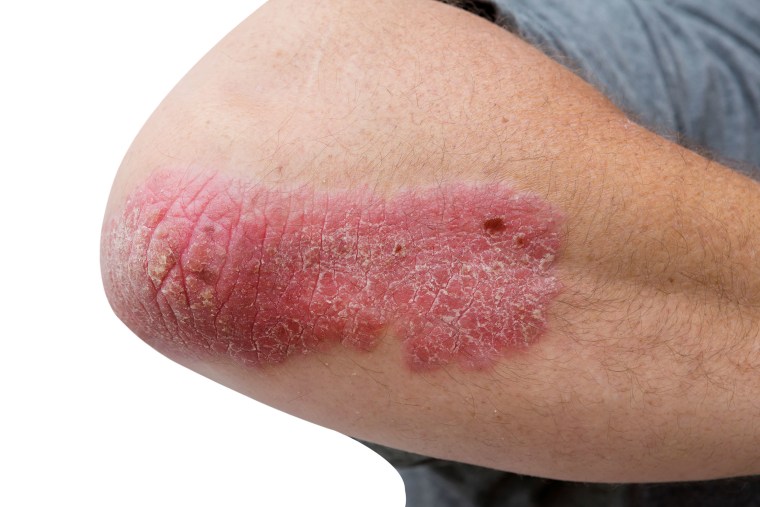

Psoriasis symptoms and signs
When you have psoriasis, your body makes new skin cells quickly, and the cells typically build up in thick, scaly patches on the skin called plaques.
Causes of psoriasis
There are a number of factors that may contribute to causing psoriasis. The immune system and genetics may play a role. Certain triggers can also cause the onset of psoriasis and psoriasis flare-ups.
Psoriasis treatments
Psoriasis doesn’t have a cure, there are medications and treatments that can help manage the condition.
Read more about psoriasis and how to treat it.
Rosacea
This common inflammatory skin condition causes redness of the face.
Photos of rosacea
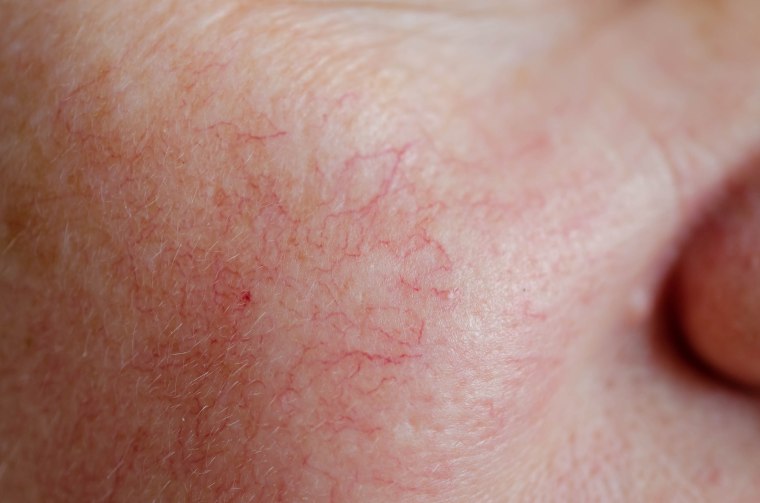
Rosacea symptoms and signs
In addition to causing facial redness, if rosacea is not treated, it can cause visible blood vessels, breakouts like acne and other symptoms.
Causes of rosacea
There are a number of factors that may play a role in whether you develop rosacea, but experts don’t know for certain what causes the skin condition.
Rosacea treatments
There is no cure for rosacea, but the condition can be managed to help keep symptoms from worsening.
Read more about rosacea and how to treat it.
Shingles
Varicella, the same virus that causes chicken pox, can reactivate and cause shingles years later.
Shingles symptoms and signs
Shingles may start as an itchy, tingling or burning pain on one side of the face or body followed by a blistering, painful red rash two or three days later.
Causes of shingles
The varicella-zoster virus (VZV) that causes chicken pox also causes shingles. Shingles can appear many years later.
Shingles treatments
You can prevent shingles with a vaccine. Early cases may be treated with antiviral drugs. Pain medications can be used to ease symptoms.
Read more about shingles and how to treat it.
Squamous cell carcinoma
Also known as cutaneous squamous cell carcinoma, this cancer develops when the squamous cells in the top layer of your skin grow out of control.
Photos of squamous cell carcinoma
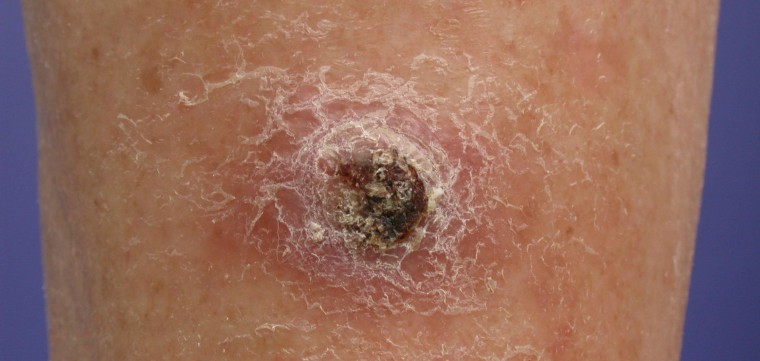
Squamous cell carcinoma symptoms and signs
Though it’s linked with exposure to ultraviolet rays, squamous cell carcinoma can crop up in areas that don’t get much sun. Watch out for rough, scaly patches, sores that don’t heal or anything else that looks suspicious.
Causes of squamous cell carcinoma
Squamous cell carcinoma is mainly caused by UV rays from the sun or indoor tanning.
Squamous cell carcinoma treatments
Treatments for squamous cell carcinoma may include surgery, radiation or other therapies. Catching it early is key.
Read more about squamous cell carcinoma and how to treat it.
How to identify a skin condition
Although these photos can help you potentially spot and identify some skin conditions, remember to always reach out to your physician for a proper diagnosis and treatment. Often, a doctor or dermatologist can diagnose a skin condition by just looking the affected area, according to the Cleveland Clinic. If that doesn't yield a diagnosis, the doctor may order tests which include biopsies, skin patch allergy tests and other diagnostic tools.



